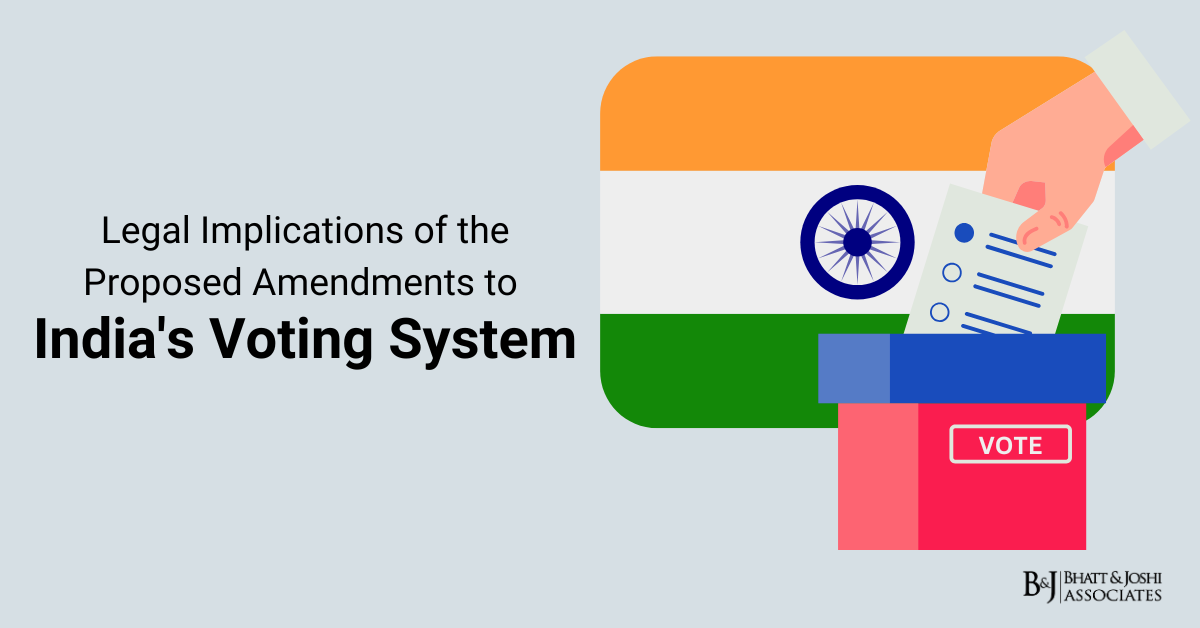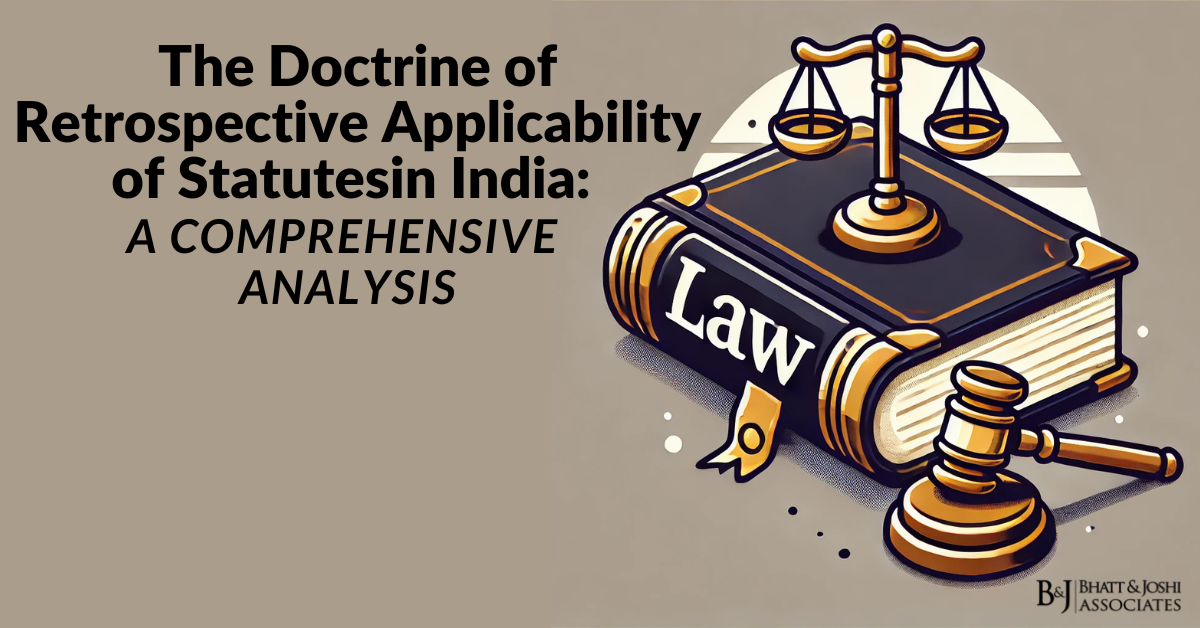Introduction
The concept of democracy, as envisioned by the framers of the Indian Constitution, places the citizen at the center of governance, ensuring that the power of decision-making rests with the people through periodic elections. India’s electoral process, governed by the Representation of the People Act, 1951, and overseen by the Election Commission of India (ECI), is an embodiment of this democratic ideal. However, with the dynamic evolution of society and technology, the voting system in India faces significant challenges, prompting discussions on proposed amendments aimed at enhancing its efficacy, inclusivity, and integrity. This article explores the implications of the proposed amendments to India’s voting system, analyzing the regulatory framework, relevant laws, and landmark judicial pronouncements, while also addressing the broader socio-political impacts of these reforms.
Current Legal Framework Governing Voting in India
India’s voting system operates under a robust legal framework that ensures free, fair, and periodic elections. The Constitution of India, under Article 324, empowers the Election Commission to supervise, direct, and control the electoral process. Key legislative instruments include the Representation of the People Act, 1950 (primarily dealing with the preparation of electoral rolls), and the Representation of the People Act, 1951, which regulates the actual conduct of elections. Together, these laws aim to provide a transparent and accountable mechanism for the exercise of franchise.
The voting process itself is guided by the Conduct of Election Rules, 1961, which outlines the procedural aspects of conducting elections. With the introduction of Electronic Voting Machines (EVMs) in the late 20th century, the efficiency and security of the voting process were significantly enhanced. Legal safeguards exist to address malpractices such as booth capturing, impersonation, and undue influence under Sections 125 to 136 of the Representation of the People Act, 1951. However, despite these provisions, contemporary challenges such as urban voter apathy, security concerns, technological vulnerabilities, and the disenfranchisement of internal migrants highlight the need for reform.
Proposed Amendments to India’s Voting System
The proposed amendments to India’s voting system focus on integrating technology, enhancing transparency, and increasing voter accessibility. Key proposals include the introduction of remote voting for migrant workers, the linkage of voter IDs with Aadhaar to curb duplication and fraud, and the potential use of blockchain technology for secure and tamper-proof voting.
Remote voting for migrant workers has emerged as a pivotal reform to address disenfranchisement. According to a 2017 Economic Survey, over 45 crore Indians are internal migrants, many of whom face logistical and administrative barriers to exercising their voting rights. The Election Commission has proposed piloting a remote voting system using blockchain technology. This system would allow registered voters to cast their vote from locations outside their home constituencies. The implementation of such a system would necessitate significant amendments to the Representation of the People Act, 1951, and the Conduct of Election Rules, 1961, to incorporate provisions for remote and technologically assisted voting mechanisms.
The proposal to link voter IDs with Aadhaar is another critical reform aimed at eliminating duplicate and fake entries in electoral rolls. This initiative, backed by Section 23(4) of the Representation of the People Act, 1950 (introduced through the Election Laws (Amendment) Act, 2021), seeks to strengthen the integrity of voter lists. However, the proposal has sparked debates over privacy concerns, data security, and the potential exclusion of vulnerable populations, including the homeless and tribal communities, who may lack Aadhaar registration. Critics argue that the linkage, if implemented without adequate safeguards, could lead to the disenfranchisement of these groups, undermining the democratic principle of universal adult suffrage.
Blockchain-based voting has been heralded as a transformative step toward ensuring the integrity of elections. By creating an immutable and transparent ledger, blockchain technology can address concerns of tampering and manipulation. However, its implementation would require a comprehensive legal framework to address issues of accessibility, cybersecurity, and verifiability. Questions about digital literacy, equitable access to technology, and the reliability of blockchain networks in a diverse and populous country like India remain significant hurdles to its adoption.
Legal and Constitutional Challenges of Electoral Reforms
The proposed amendments to India’s voting system face significant constitutional and legal hurdles. The linkage of voter IDs with Aadhaar raises questions about the right to privacy, a fundamental right under Article 21 as upheld in the landmark judgment of Justice K.S. Puttaswamy (Retd.) v. Union of India (2017). In this case, the Supreme Court emphasized the need for proportionality and necessity in implementing measures that infringe on privacy. Critics argue that mandatory Aadhaar-voter ID linkage may fail the test of proportionality, as alternative measures to curb electoral fraud, such as strengthening the verification processes for voter registration, already exist.
The introduction of remote voting raises concerns about the sanctity of the secret ballot, a cornerstone of democratic elections. The Supreme Court, in Kuldip Nayar v. Union of India (2006), underscored the importance of secrecy in voting as an essential feature of free and fair elections. Remote voting systems must address these concerns by ensuring that technological solutions do not compromise voter anonymity. Additionally, questions about the integrity of the process, particularly in scenarios where votes are cast from remote and potentially unsupervised locations, pose legal and ethical challenges.
Blockchain-based voting, while promising enhanced transparency, faces challenges of digital literacy and infrastructure in a country as diverse as India. The legal framework must account for the digital divide and ensure that marginalized communities are not disenfranchised. The implementation of blockchain voting would also necessitate amendments to the Information Technology Act, 2000, to address cybersecurity concerns and define legal standards for electronic records in the context of elections. The challenges of ensuring scalability and reliability in such a system cannot be underestimated, given India’s demographic and geographic diversity.
Judicial Pronouncements on Electoral Reforms
India’s judiciary has played a pivotal role in shaping the electoral landscape through landmark judgments. The Supreme Court’s directive in PUCL v. Union of India (2013) led to the introduction of the NOTA (None of the Above) option, empowering voters to reject all candidates and enhancing their choice. Similarly, the Court’s judgment in Lily Thomas v. Union of India (2013) disqualified convicted legislators, reinforcing the principle of electoral integrity. These judgments underscore the judiciary’s commitment to upholding the principles of democracy and electoral fairness.
In the context of proposed reforms, the judiciary’s stance on privacy, inclusivity, and fairness will be critical. The linkage of Aadhaar with voter IDs, for instance, will likely be scrutinized under the principles laid down in Puttaswamy. Similarly, challenges to remote voting systems will require balancing the need for inclusivity with the sanctity of the electoral process. The judiciary’s role in ensuring that technological advancements do not undermine fundamental rights will be pivotal in shaping the trajectory of these reforms.
Regulatory Mechanisms and Oversight of Electoral Reforms
The Election Commission of India, as the custodian of elections, will play a central role in implementing and regulating the proposed amendments. The ECI’s Model Code of Conduct (MCC) and guidelines on the use of technology will need to be updated to address new challenges posed by remote and blockchain voting systems. Additionally, the Data Protection Bill, once enacted, will have significant implications for the Aadhaar-voter ID linkage and the overall management of electoral data. Ensuring that electoral data is securely stored and managed, while upholding individual privacy, will be a key responsibility of the regulatory framework.
The role of legislative oversight will also be critical. Parliamentary committees must ensure that the proposed amendments are thoroughly debated, addressing concerns of feasibility, inclusivity, and constitutionality. Public consultations and stakeholder engagement, including input from civil society and technical experts, will be essential to crafting a balanced and comprehensive legal framework. Legislative debates must focus on ensuring that the reforms do not exacerbate existing inequalities or create new barriers to voter participation.
International Perspectives and Best Practices
India can draw lessons from international experiences in electoral reforms. Estonia, a pioneer in electronic and internet voting, has demonstrated the potential of technology to enhance voter participation. However, its success hinges on robust cybersecurity measures and widespread digital literacy, both of which remain challenges in the Indian context. Estonia’s experience underscores the importance of ensuring that technological innovations are accompanied by public trust and confidence in the electoral process.
The United States, with its decentralized electoral system, has grappled with issues of voter suppression and technological vulnerabilities. India must learn from these challenges and ensure that its reforms do not inadvertently exclude marginalized communities or compromise the integrity of elections. Transparency, accountability, and inclusivity must remain guiding principles in the design and implementation of electoral reforms.
Conclusion: Enhancing India’s Electoral System through Reform
The proposed amendments to India’s voting system represent a significant opportunity to enhance the inclusivity, transparency, and efficiency of the electoral process. However, these reforms must be approached with caution and deliberation to ensure that the solutions do not introduce new vulnerabilities or exacerbate existing disparities.
Key legal and constitutional challenges, including concerns about privacy, voter secrecy, and technological accessibility, must be carefully addressed. The judiciary, legislature, and Election Commission of India all have critical roles to play in navigating these challenges. Furthermore, public trust must remain a cornerstone of electoral reforms. Without trust in the voting system, even the most advanced technological solutions may fail to achieve their intended outcomes.
Moving forward, a phased and consultative approach will be essential. Pilot projects and incremental implementation can help identify and mitigate risks before scaling up. Public consultations and collaborations with technical experts can ensure that the reforms are both feasible and inclusive. As India seeks to modernize its voting system, it must remain steadfast in upholding the democratic principles enshrined in its Constitution.
In conclusion, while the challenges are formidable, the opportunities presented by these reforms are equally significant. By addressing these issues with foresight and inclusivity, India has the potential to set a global benchmark for electoral innovation and strengthen its democratic fabric for generations to come.














